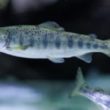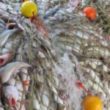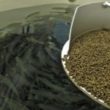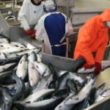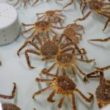FutureFish
Sustainable breeding of salmon and lumpfish for robustness under climate change

We study the genetics of robustness in salmon to thermal stress and sea-lice to improve the robustness of salmon and lumpfish under climate change.
Start
01. Jan 2017
End
31. Dec 2019
Funded by
Nofima
Cooperation
Mowi ASA
Primary objective
The primary objective of FutureFish is to improve the robustness of salmon and lumpfish under a changing climate scenario through investigating the genetics of robustness in salmon to thermal stress and sea-lice and improving the sea-lice eating ability of lumpfish.
Secondary objectives
To achieve the primary objective of FutureFish, the secondary objectives are to:
- Quantify genetic parameters and identify the genomic regions and key genes involved in growth and survival of salmon in response to thermal stress.
- Study the effects of temperature on skin health and mucus characteristics of Atlantic salmon.
- Analyse and compare chemical and microbial communities of the skin mucus between the two extreme groups of fish with respect to lice counts.
- Investigate the physical, biological and chemical properties of salmon skin mucus that are involved in sea lice resistance and its tolerance to lice burden induced by increased water temperature.
- Quantify genetic parameters and identify genomic regions and key genes related to salmon skin mucus properties.
- Identify key genes involved in sea-lice eating ability in lumpfish.
Publications
Strategic priority areas
Nofima invests its own resources in order to increase competence in useful, relevant and innovative areas and strengthen our position among the leading applied research institutes.
Active projects
Some previous projects
Research facilities
